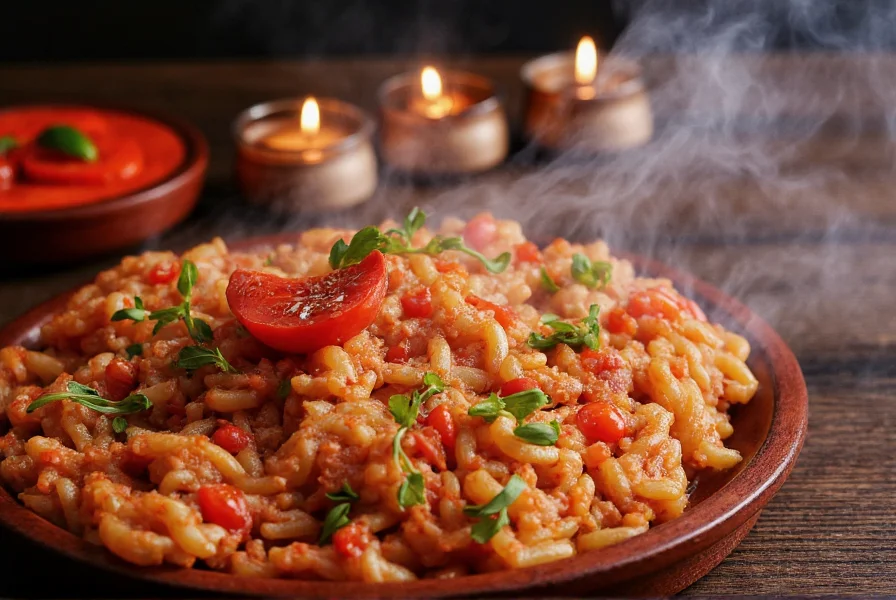Fish taco rub is a dry seasoning blend specifically designed for fish tacos. It typically includes spices like paprika, cumin, garlic powder, and chili powder to enhance the fish's natural flavor without overpowering it. This guide covers everything you need to know, from essential components and DIY recipes to professional application tips and buying advice.
| Ingredient | Flavor Profile | Role in the Rub |
|---|---|---|
| Paprika | Sweet, smoky | Adds color and mild heat |
| Cumin | Earthy, nutty | Builds depth and warmth |
| Garlic Powder | Umami-rich, savory | Boosts overall savoriness |
| Chili Powder | Spicy, earthy | Kicks up the heat level |
| Oregano | Herbaceous, slightly bitter | Adds traditional Mexican flair |
| Coriander | Citrusy, floral | Lifts and brightens the blend |
| Sea Salt | Salty, briny | Enhances all other flavors |
Top 5 Fish Taco Rubs You Should Try This Summer
If DIY isn't your thing, there are high-quality store-bought options that deliver serious flavor. Here's our curated list of five stellar choices:
- El Paso Smokey Blend – Smoked paprika and cumin dominate this rub, giving it a rich, campfire-like essence.
- Coastal Citrus Rub – Zesty lemon peel and coriander make this one a perfect match for mahi-mahi or tilapia.
- Desert Heat Rub – Packed with chipotle powder and garlic, this one hits the spice meter hard but never overwhelms.
- Island Fiesta Mix – Tropical vibes with hints of mango powder and lime zest—ideal for grilled snapper.
- Classic Baja Seasoning – The OG of fish taco blends; balanced, versatile, and always crowd-pleasing.

DIY Fish Taco Rub Recipes for Flavor Fanatics
Making your own rub gives you full control over flavor intensity, salt content, and ingredient purity. Here's a go-to recipe to start with:
Classic Homemade Fish Taco Rub
- 2 tbsp smoked paprika
- 1 tbsp ground cumin
- 1 tbsp chili powder
- 1 tsp garlic powder
- 1 tsp dried oregano
- ½ tsp coriander
- 1 tsp sea salt

Mix everything well and store in an airtight container. Use within 3–4 months for maximum freshness.
How to Apply Rub Like a Pro—No Flakes, Just Flavor
You wouldn't paint a canvas without priming it first—and the same goes for seasoning fish! Follow these steps for optimal rub adhesion and flavor penetration:
- Dry the fish thoroughly using paper towels. Moisture is the enemy of crust.
- Lightly oil the surface of the fish to help the spices stick.
- Apply the rub generously, pressing it gently into the flesh.
- Let it rest for 15–30 minutes before cooking to allow the flavors to penetrate.
- Cook immediately or refrigerate for up to 2 hours if marinating.

Buying Guide: How to Choose the Right Fish Taco Rub for You
| Feature | Low-Salt Option | Vegan-Friendly | Gluten-Free | Organic Certified |
|---|---|---|---|---|
| Best For | Heart-conscious eaters | Vegans and vegetarians | Gluten-sensitive folks | Health-focused cooks |
| Recommended Brand | Nature's Table Lite Rub | Garden Spice Co. Vegan Blend | Baja Gluten-Free Rub Mix | Green Earth Organic Rub |
| Price Range | $6–$8 | $7–$9 | $6.50–$8.50 | $9–$11 |
| Where to Buy | Amazon, Whole Foods | Target, Thrive Market | Trader Joe’s, Sprouts | Specialty stores |
FAQ: Your Fish Taco Rub Questions Answered
What makes a fish taco rub different from regular seasoning blends?
Fish taco rubs are specifically formulated to complement delicate seafood without overpowering it. They typically feature lighter citrus notes (like coriander and lime zest), moderate heat levels, and less salt than meat rubs. The balance of smoky paprika with herbal elements creates that authentic Baja coastal profile that standard seasoning blends lack.
Can I use fish taco rub on frozen fish?
For best results, thaw your fish completely and pat it dry before applying rub. Frozen or wet fish won't allow the spices to adhere properly, leading to uneven seasoning. If using frozen fish, allow 24 hours for thawing in the refrigerator, then proceed with the standard dry-oil-rub-rest process for optimal flavor penetration.
How long should fish marinate with the rub before cooking?
Fish needs minimal marinating time compared to meats. 15-30 minutes at room temperature is ideal for flavor penetration without "cooking" the fish. Never exceed 2 hours in the refrigerator, as the acid from ingredients like lime zest can start to denature the delicate flesh, resulting in a ceviche-like texture.
What's the best type of fish for taco rubs?
Firm-fleshed white fish work best with rubs. Opt for mahi-mahi, snapper, cod, or halibut as they hold their structure during cooking and absorb flavors beautifully. Avoid delicate fish like sole or flounder which can become overwhelmed by bold rubs. For sustainability, check Seafood Watch recommendations before purchasing.
Can I substitute fresh spices for dried in homemade rubs?
Fresh spices behave differently than dried in rub applications. For best results, stick with dried spices which have concentrated flavors and won't introduce excess moisture. If using fresh citrus zest, add it just before applying the rub. Fresh garlic or herbs should be used in marinades rather than dry rubs to prevent burning during cooking.
How do I store homemade fish taco rub for maximum freshness?
Store your homemade rub in an airtight glass container away from light and heat. Properly stored, it will maintain peak flavor for 3-4 months. Avoid storing in clear containers near stovetops, as heat and light degrade spices quickly. For extended shelf life, keep in the refrigerator (but allow to come to room temperature before using to prevent condensation on fish).
Final Thoughts: Rub It In, Baby!
A good fish taco rub can turn a humble fish filet into a flavor bomb worthy of any coastal celebration. Whether you opt for a premixed brand or whip up your own at home, remember that the best rub is the one that makes your taste buds dance.

So go ahead—rub it in. Because when it comes to flavor, more is definitely merrier.











 浙公网安备
33010002000092号
浙公网安备
33010002000092号 浙B2-20120091-4
浙B2-20120091-4